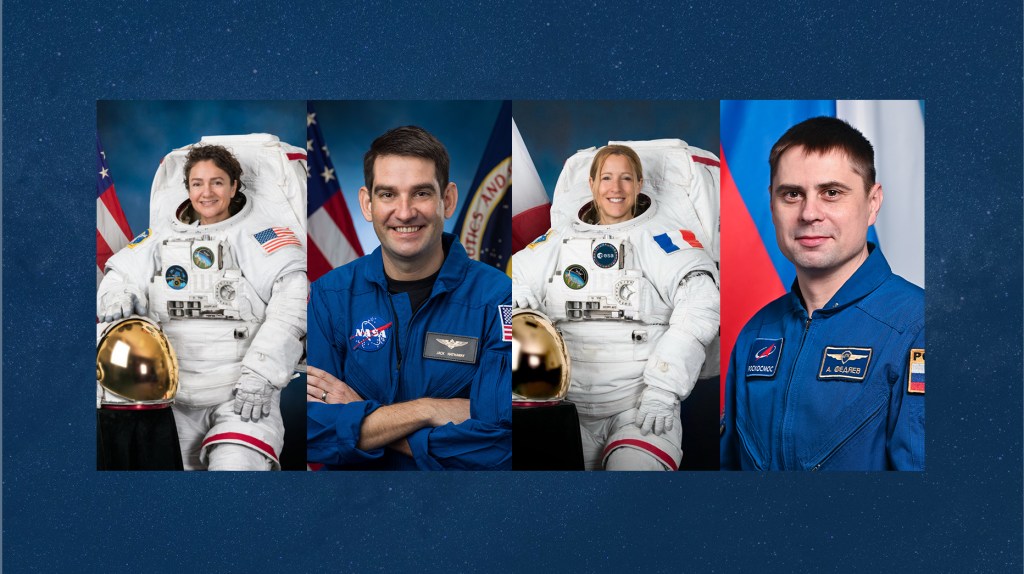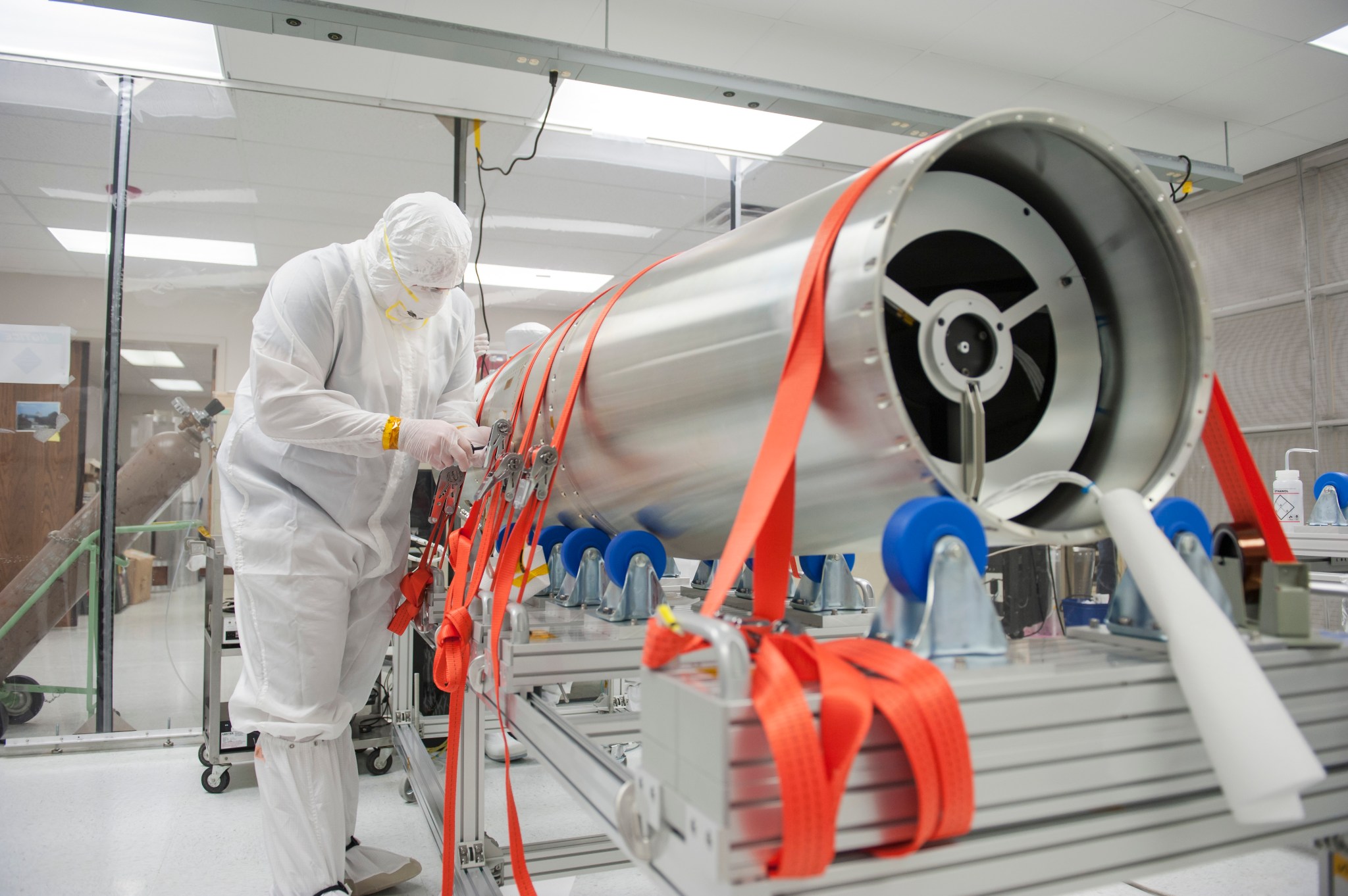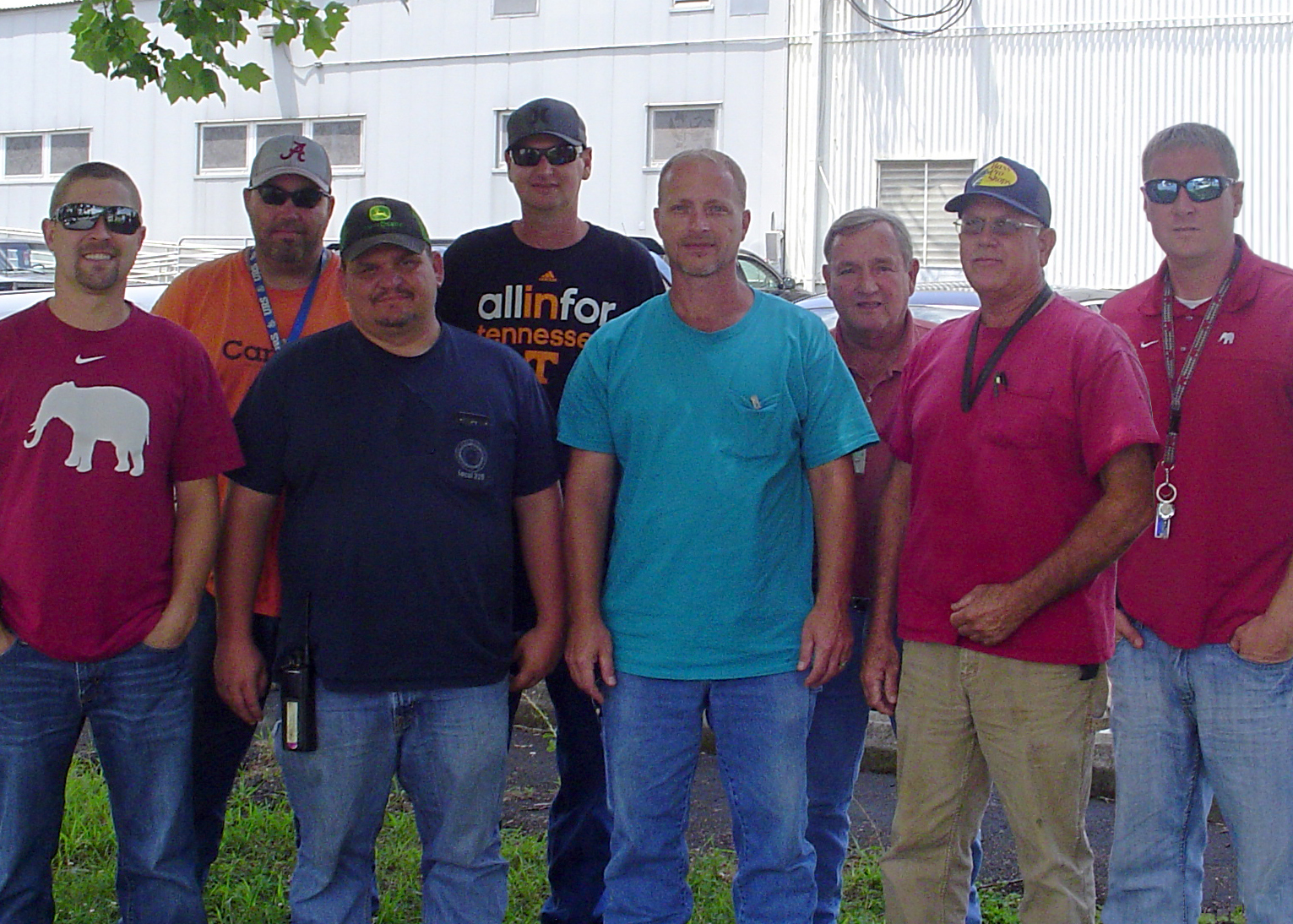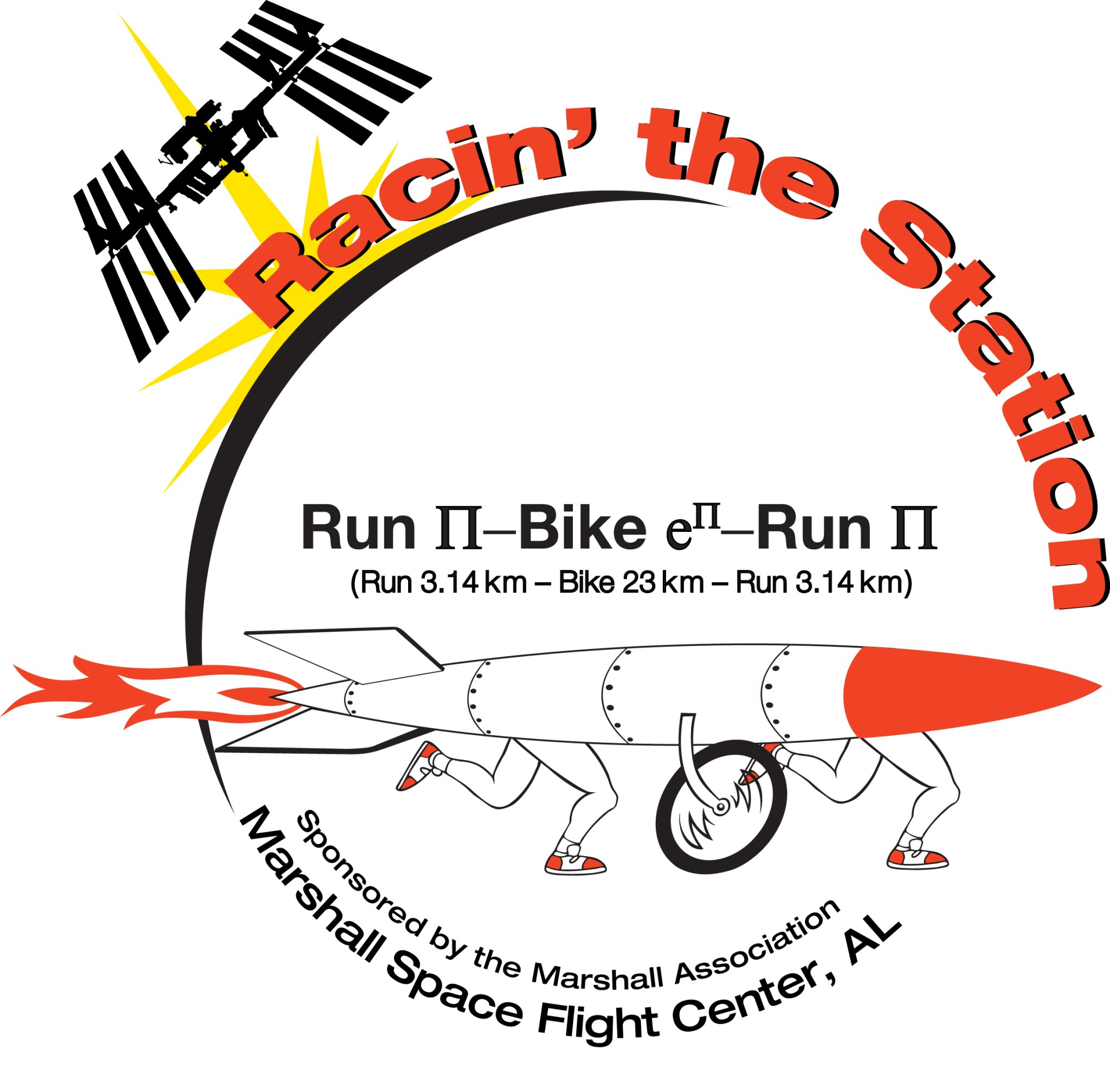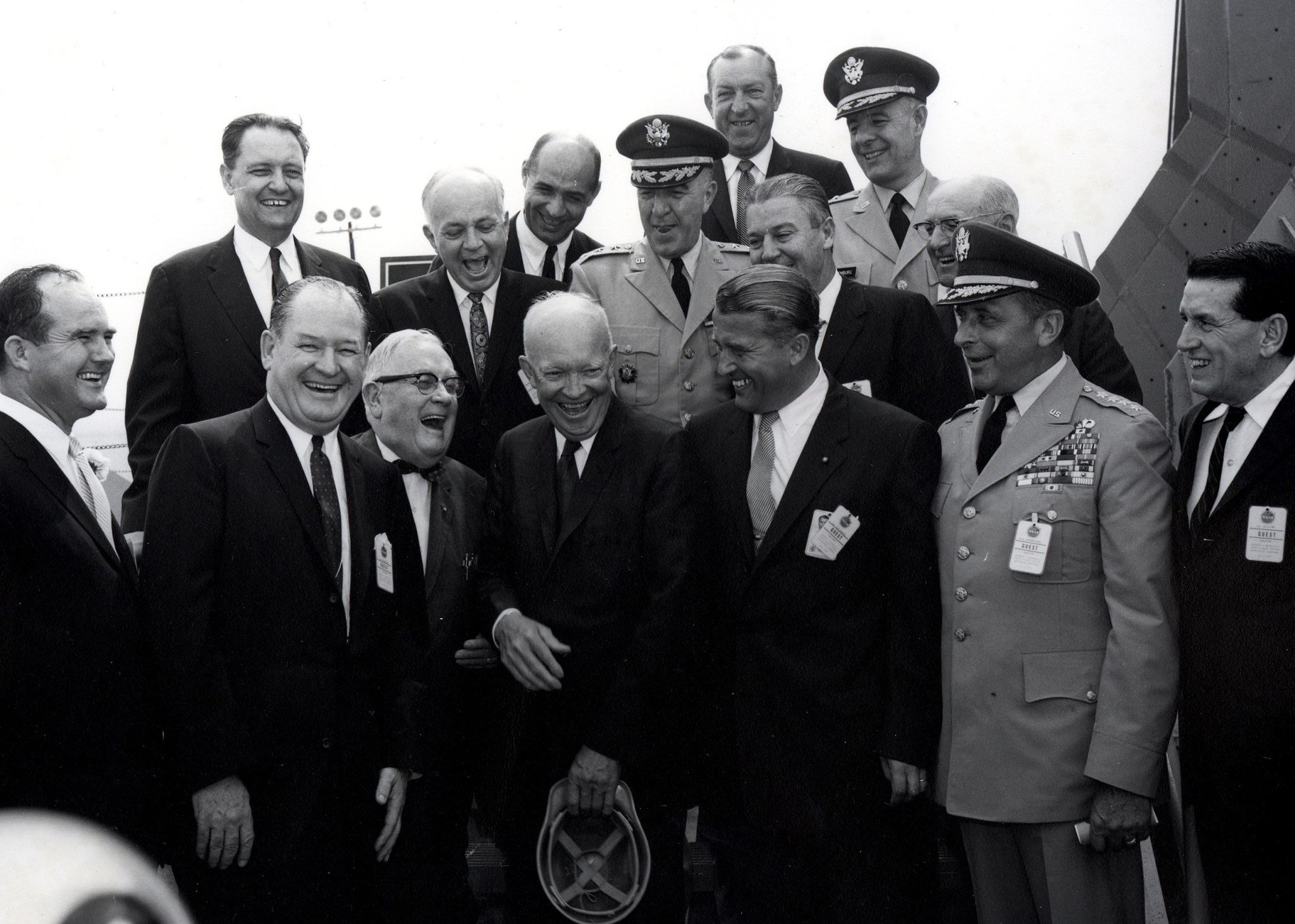In This Week’s Star
- The Heat Goes On as Engineers Start Analysis on SLS Base Heating Test Data
- NASA’s CLASP Telescope Successfully Launches Sept. 3 to Conduct Solar Study
- Critical Mission Support: Center Operations Workers Recognized for Support Following Water Leak
- NASA Technology Inspires Students to Create Commercial Businesses
- Where the Rubber Meets the Road: Registration Open for 2015 Racin’ the Station
- This Week in NASA History: President Eisenhower Dedicates Marshall as New NASA Field Center — Sept. 8, 1960
- Obituaries
The Heat Goes On as Engineers Start Analysis on SLS Base Heating Test Data
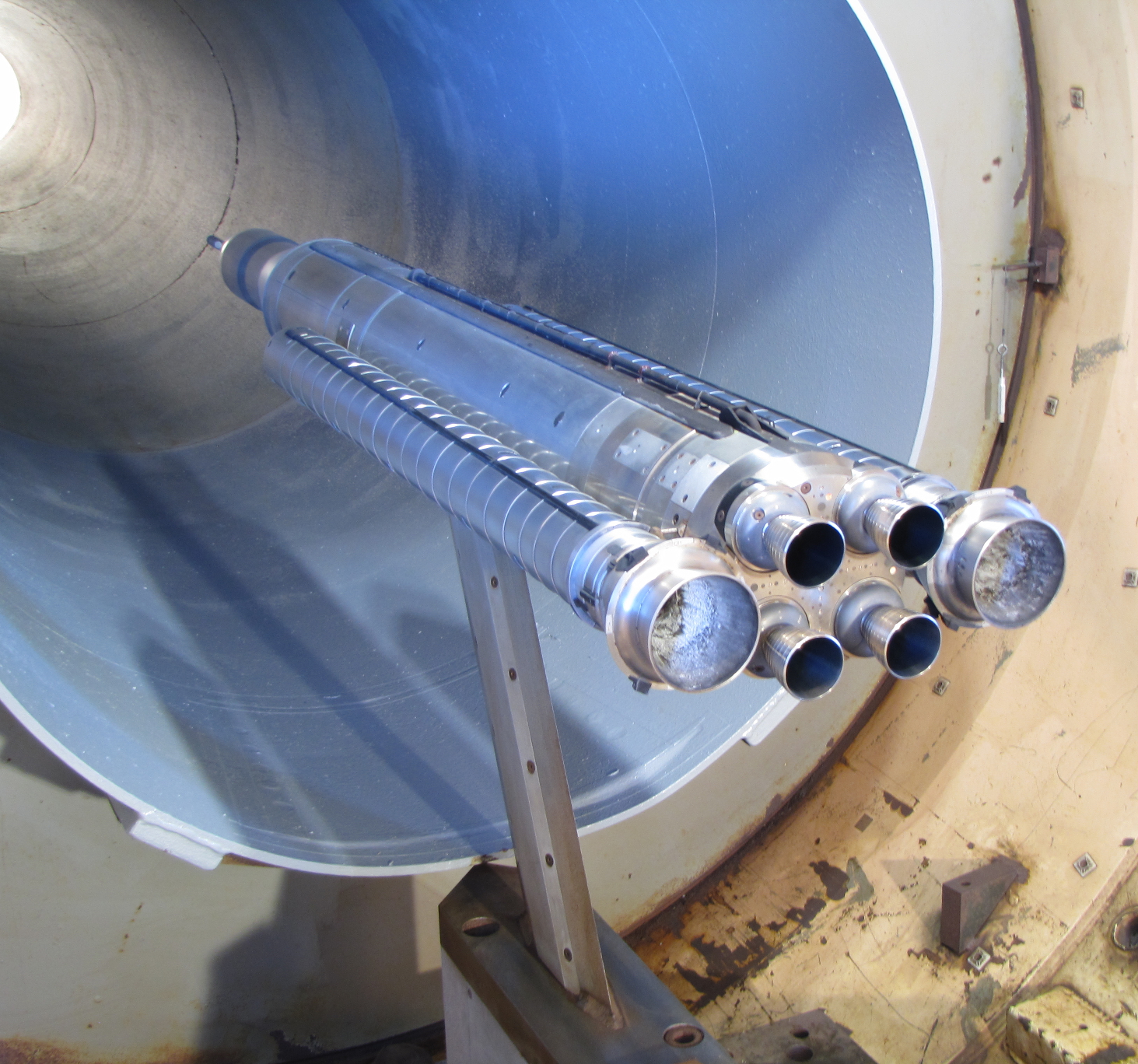
Engineers at NASA’s Marshall Space Flight Center have successfully completed base heating testing on 2-percent scale models of the Space Launch System propulsion system. SLS will be the most powerful rocket ever built for deep space missions, including to an asteroid placed in lunar orbit and ultimately to Mars. The SLS propulsion system uses two, five-segment solid rocket boosters and four core stage RS-25 engines that burn liquid hydrogen and liquid oxygen. Sixty-five hot-fire tests using the mini models provided data on the convective heating environments that the base of the rocket will experience during ascent. Engineers have many months ahead analyzing the data, which will be used to verify flight hardware design environments and set specifications for the design of the thermal protection system for the base of the rocket. The thermal protection system at the base of the vehicle keeps major hardware, wiring and the crew safe from the extreme heat created by the boosters and engines while burning on ascent. The models were designed, built and tested by Marshall engineers, in close collaboration with CUBRC Inc. of Buffalo, New York. Video of one of the tests can be found online.
NASA’s CLASP Telescope Successfully Launches Sept. 3 to Conduct Solar Study
By Rick Smith
NASA’s CLASP instrument, a joint effort between the United States, Japan, Spain and France, launched successfully on Sept. 3, delivering the first-ever measurement of the magnetic field of the sun’s middle layers, the upper chromosphere and the transition region.
CLASP is shorthand for the Chromospheric Lyman-Alpha Spectro-Polarimeter, a high-tech telescope designed to obtain unprecedented observations during its brief suborbital flight, during which it studied the sun for a brief, 300-second window.
Specifically, it was designed “to measure the Hanle effect polarization of Lyman-Alpha in the solar chromosphere,” said Amy Winebarger, principal investigator for CLASP and a researcher in the Science Research Office at NASA’s Marshall Space Flight Center.
That’s a technical way of saying the instrument measured “a specific wavelength of ultraviolet light emitted by hydrogen ions in this solar region, and the polarization of this light can be correlated to the intensity and direction of the magnetic field,” she explained. “The polarization of this specific spectral line is extremely sensitive to magnetic fields, making CLASP more effective than previous measuring methods by a factor of 100.”
Winebarger reported the mission flew as anticipated. The CLASP team will study the data gathered and report their findings soon.
What’s so important about studying the chromosphere’s magnetic field? “It plays a crucial role in dictating the structure of the sun’s atmosphere,” said Winebarger’s CLASP colleague, Marshall astrophysicist Jonathan Cirtain. “It also acts as a conduit for mass and energy to flow into the solar corona and solar wind — some of it heading toward us as powerful solar flares that can disrupt Earth satellites. It’s critical to understand the process by which the sun releases these bursts of energy.”
Winebarger, Cirtain and their team are no strangers to such research. They developed two previous sounding-rocket solar experiments, the High Resolution Coronal Imager, or Hi-C, which launched in 2012, and the Solar Ultraviolet Magnetograph Instrument, or SUMI, which completed its second research flight in 2012.
CLASP owes a lot to those previous missions — and to its international team of contributors, Winebarger said. It is based on pioneering theoretical research by Javier Trujillo-Bueno and his team at the Instituto de Astrofísica de Canarias in Santa Cruz de Tenerife, Spain. SUMI and Hi-C provided the inspiration for CLASP’s optical layout, electronics and electrical interface. Its internal structure and optics were provided by the National Astronomical Observatory of Japan in Tokyo. Additional optical contributions were made by the Institut d’Astrophysique Spatiale in Paris. The cameras used to study the sun, delivering more stable, high-speed images and less noise than their predecessors, were developed at Marshall by researchers in the Engineering Directorate’s Space Systems Department.
The flight experiment rode on a Black Brant IX sounding rocket launched from White Sands Missile Range in New Mexico. CLASP is supported through NASA’s Sounding Rocket Program at the agency’s Wallops Flight Facility, which is managed by NASA’s Goddard Space Flight Center. NASA’s Heliophysics Division manages the sounding-rocket program.
The mission is a joint effort between NASA, the Japan Aerospace Exploration Agency headquartered in Chofu, the Instituto de Astrofísica de Canarias and the Institut d’Astrophysique Spatiale. Additional partners include the Lockheed Martin Solar Astrophysics Laboratory and the University of Alabama in Huntsville.
Smith, an ASRC Federal/Analytical Services employee, supports the Office of Strategic Analysis & Communications.
Critical Mission Support: Center Operations Workers Recognized for Support Following Water Leak
By Brian C. Massey
Center Operations employees at NASA’s Marshall Space Flight Center received special recognition recently for their work following the quick repair of a water leak that could have affected two of NASA’s highest profile programs.
Building 4755, located off Tiros Street, houses many of the manufacturing capabilities for the Space Launch System and the International Space Station’s Environmental Control and Life Support Systems. When the potable water leak emerged on July 9, 4755 team members were on a tight schedule to test and qualify a spare ECLSS Fluid Control Pump Assembly to replace the previous spare before the next scheduled space station resupply mission. Crews worked around the clock to ensure the building’s functionality was restored with limited interruption.
According to Michael Bradford, project manager of operations and maintenance for Marshall’s 4700 block, crews worked with counterparts from the U.S. Army to locate and isolate the ruptured line shortly after the leak was reported. Early the next morning, temporary restrooms and bottled water were delivered to keep the building operative while the crews worked to repair the leak.
Center Operations workers worked all day July 10, and throughout the weekend in temperatures approaching 100 degrees. Once the ruptured line was located, crews began excavation — a meticulous task, as the area was heavily congested with chilled water lines, concrete and other equipment support. While they worked quickly, they also had to work carefully to avoid additional problems.
The crux of the situation became apparent when crews discovered the line was buried 7 feet below the equipment room, where it entered the building. Repairing the leak under the building would be time consuming and require extra safety measures. With the building supporting critical missions daily — time was precious. So the crews opted to reroute the water with a new water line, which they tied into the equipment room’s existing plumbing.
On Sunday, crews cut and capped the old line and finished the project. When Building 4755 team members arrived Monday morning to resume their work supporting SLS and the space station, it was a seamless transition — as if nothing had happened.
“The crews got to work right away,” said Roy Malone, Marshall’s Center Operations director. “They put in a lot of hours and were innovative in finding a solution to ensure the critical work went uninterrupted. I’m really proud of the work they did and the work they do everyday to support the amazing things being done at Marshall.”
In recognition of their efforts, Malone presented Center Operations Director Appreciation Certificates to pipefitters Dusty Crouch, Keith Hill, Don Davis, Matt Tunstill, Lucas Broadway and Denny Rice; and to heavy equipment operators Scott LaGrone and Chad Tidwell, all of the URS Corp. of San Francisco.
The award, recently implemented by Malone, recognizes efforts by Center Operations team members or other members of the Marshall team supporting Center Operations that go above and beyond in support of NASA and Marshall missions. “With this award,” said Malone, “we want to recognize our team members and reinforce how important their work is to Marshall.”
Massey, an ASRC Federal/Analytical Services employee and the Marshall Star editor, supports the Office of Strategic Analysis & Communications.
NASA Technology Inspires Students to Create Commercial Businesses
By Logan Moore
NASA Marshall Space Flight Center’s Technology Transfer Office recently worked with students from the University of Alabama in Tuscaloosa; helping them create ideas for new businesses using Marshall-patented technology with commercial potential.
At Marshall, engineers and scientists work to create innovative technology to take NASA farther into space, benefit life on the International Space Station and better understand Earth and our solar system. The Technology Transfer Office ensures that technologies developed for missions of exploration and discovery are available to the public.
Technology Transfer University, a new agency program first implemented at the University of Alabama in Tuscaloosa in spring 2015, gives college students the opportunity to develop new uses for NASA technology by working with the scientists and engineers who created it.
Seven hundred undergraduate students studying science, technology, engineering and math participated in this year’s T2U Program, in conjunction with a University of Alabama in Tuscaloosa initiative that puts students on track to earn a master’s degree in business administration.
Hundreds of teams of students worked for six weeks to develop secondary uses for Marshall technologies. The top 20 teams were selected in February and continued competition until NASA selected two winning teams in April and recognized three for honorable mention.
“Selecting winners was not easy. The students came up with lots of great ideas,” said Gwenevere Jasper, T2U program lead. “We chose the teams whose product ideas best leveraged the unique features of the NASA patent and also had the most commercial potential.”
Students Cody Caver from Hattiesburg, Mississippi; Carson Davis from Maryville, Tennessee; and Ryan Hazel from Hackleburg, Alabama, used NASA technology created by former Marshall engineer Jeff Lindner, director of research and technology at Linc Research of Huntsville, to create Dash Cam 360 — a camera that can be used on the dashboards of law enforcement vehicles to record 360-degree video or image. Cameras currently used on law enforcement vehicles capture only a front view.
The original purpose of Lindner’s technology was to illuminate the inside of the space shuttle’s main engine components when performing vibration tests. Lindner participated in the T2U Program and helped the students formulate their ideas.
“I am happy to be a resource to these students who are hungry for knowledge,” said Lindner. “They recognized that problem-solving goes beyond memorizing an equation. It’s a creative process.”
The students have licensed the Marshall-patented technology and are in the process of starting their own business selling Dash Cam 360.
Another winning team — Alexander Kersey from Houston, Texas; Noah Resendez from Harlingen, Texas; and Clayton Wagenhals from Conifer, Colorado — created InstaSplint, which allows those injured and in need of immediate care to inflate a foam splint that will protect their injury until they are able to receive medical attention. The technology was originally invented by Marshall engineers Mike Tinker and Andrew Schnell with the purpose of creating habitats on the moon.
“The success of these students is a reflection of the success of the T2U Program,” said Terry Taylor, manager of Marshall’s Technology Transfer Office. “I couldn’t be more proud of these young people and I look forward to working with them as they continue to develop the technology. It will be exciting to see these products in stores, and I don’t think it will be too long before that day comes.”
Marshall’s Technology Transfer Office will partner with the University of Alabama in Tuscaloosa again in fall 2016 for the T2U Program. Taylor and his team plan to eventually expand the program to other college campuses as well.
“This is just the beginning of a program that will empower students to create their own jobs for years to come,” said Taylor.
Moore, a NASA summer intern, supported the Office of Strategic Analysis & Communications.
Where the Rubber Meets the Road: Registration Open for 2015 Racin’ the Station
By Bill Hubscher
For more than 15 years, the International Space Station has served as a global research laboratory, and right here at Marshall Space Flight Center, controllers have been working with the crew to conduct science around the clock, 365 days of the year. As NASA marks the mid-way point of the station’s One Year mission — collecting data on the physical and psychological challenges of long-duration spaceflight on humans — athletes on the ground will test their own endurance at the annual Racin’ the Station duathlon.
Marshall is inviting athletes of all ages and styles — from monthly marathon runners to the occasional family-outing cyclist — to finish a specially designed course on Redstone Arsenal in the same amount of time it takes for the station to finish one orbit around the planet — just over 91 minutes.
Registration is open for the fourth annual Racin’ the Station duathlon at Marshall on Sept. 26. Participants can continue to register online for the event up until a few days before the race.
The timed course for adults begins at 8:30 a.m. with a 3.14 km run, followed by a 23 km bicycle ride, and finishes with another 3.14 km run, with the start and finish line at Marshall’s Wellness Center Building 4315. The length of the running portion of the race is not a coincidence. Race organizers arranged the distance to coincide with the number pi or π approximately equal to 3.14159. If the entire race seems too vigorous, adult participants can form two-person relay teams in which one person does the running portions and a partner handles the cycling.
Racers will travel by many of Marshall’s facilities including the Payload Operations Integration Center, the command post of space station science. At race headquarters, in Building 4316, they will have the opportunity to learn about NASA programs, including the International Space Station, the Space Launch System, Mighty Eagle, the United Launch Alliance Atlas IV and Delta V rockets.
The duathlon is organized by the Marshall Association, a professional employee service organization at Marshall whose members include civil service employees, retirees and contractors. It provides informal networking and community-building opportunities for its members and is open to anyone with access to Redstone Arsenal.
“This event is a way for the Marshall Association to raise money for scholarships,” said race founder and director Kent Criswell, Intertank Subsystem Manager for NASA’s Space Launch System which is managed at Marshall. “Considering our ties to the orbiting laboratory, we created this special duathlon course with the station in mind. The event has grown the past couple of years and we’re looking forward to a fun, safe family event.”
Racin’ the Station became a family affair in 2013 when Criswell and his team created an “anti-duathlon” for younger athletes from ages 4 to 13. Participants bike, run and bike again on a selection of shorter courses — also based on pi — that begin around 10:45 a.m. There are two different overall lengths based on the self-assessed ability of the youth. The short course starts and finishes with a 2-mile bike ride (approximately 3.14 km) with a half-mile run in between. The youth long course is twice the size of the short: four-mile rides with a one-mile run separating them.
Because the race is held on Redstone, a federal installation, participation is restricted to U.S. citizens. Prizes will be awarded in multiple categories. For details on the race, including course maps, distances, requirements to access Redstone and to register, email ISSduathlon@gmail.com or visit the Racin’ the Station Duathalon Web page.
As participants in the One Year mission, NASA astronaut Scott Kelly and Russian cosmonaut Mikhail Kornienko launched to the station in March 2015 for a year-long stay in space — twice as long as typical U.S. missions. The data from the human research investigations the two men are conducting is expected to yield beneficial knowledge on the medical, psychological and biomedical challenges faced by astronauts during long-duration spaceflight as NASA plans the journey to Mars.
Hubscher, an ASRC Federal/Analytical Services employee, supports the Office of Strategic Analysis & Communications.
This Week in NASA History: President Eisenhower Dedicates Marshall as New NASA Field Center — Sept. 8, 1960
This week in 1960, President Dwight D. Eisenhower, center foreground, travelled to Huntsville to dedicate NASA’s Marshall Space Flight Center as a new NASA field center. Eisenhower and Marshall’s first center director, Dr. Wernher von Braun, third from right, laugh with other guests during the dedication. The NASA History Program documents and preserves NASA’s remarkable history through a variety of products — photos, press kits, press releases, mission transcripts and administrators’ speeches. For more pictures like this one and to connect to NASA’s history, visit the History Program’s Web page.
Obituaries
George R. Thrower, 86, of Huntsville, died Aug. 29. He retired from the Marshall Center in 1991 as an aerospace engineer. He is survived by his wife, Martha Willis Thrower.
Floyd M. Clark, 89, of Huntsville, died Aug. 29. He retired from the Marshall Center in 1979 as a program analyst.
James R. Robinson, 85, of Duxbury, Massachusetts, died Aug. 20. He retired from the Marshall Center in 1995 as a program management specialist.







